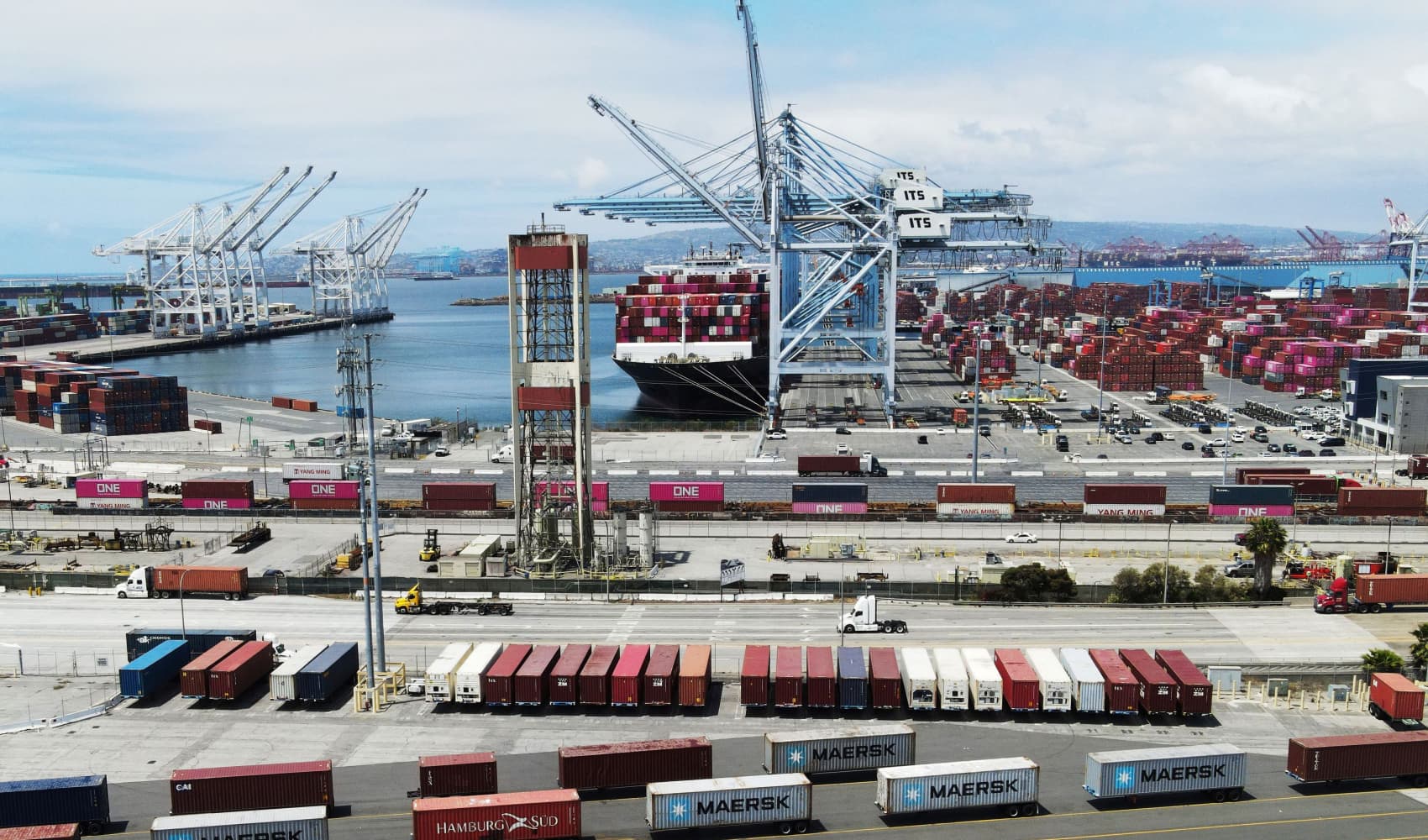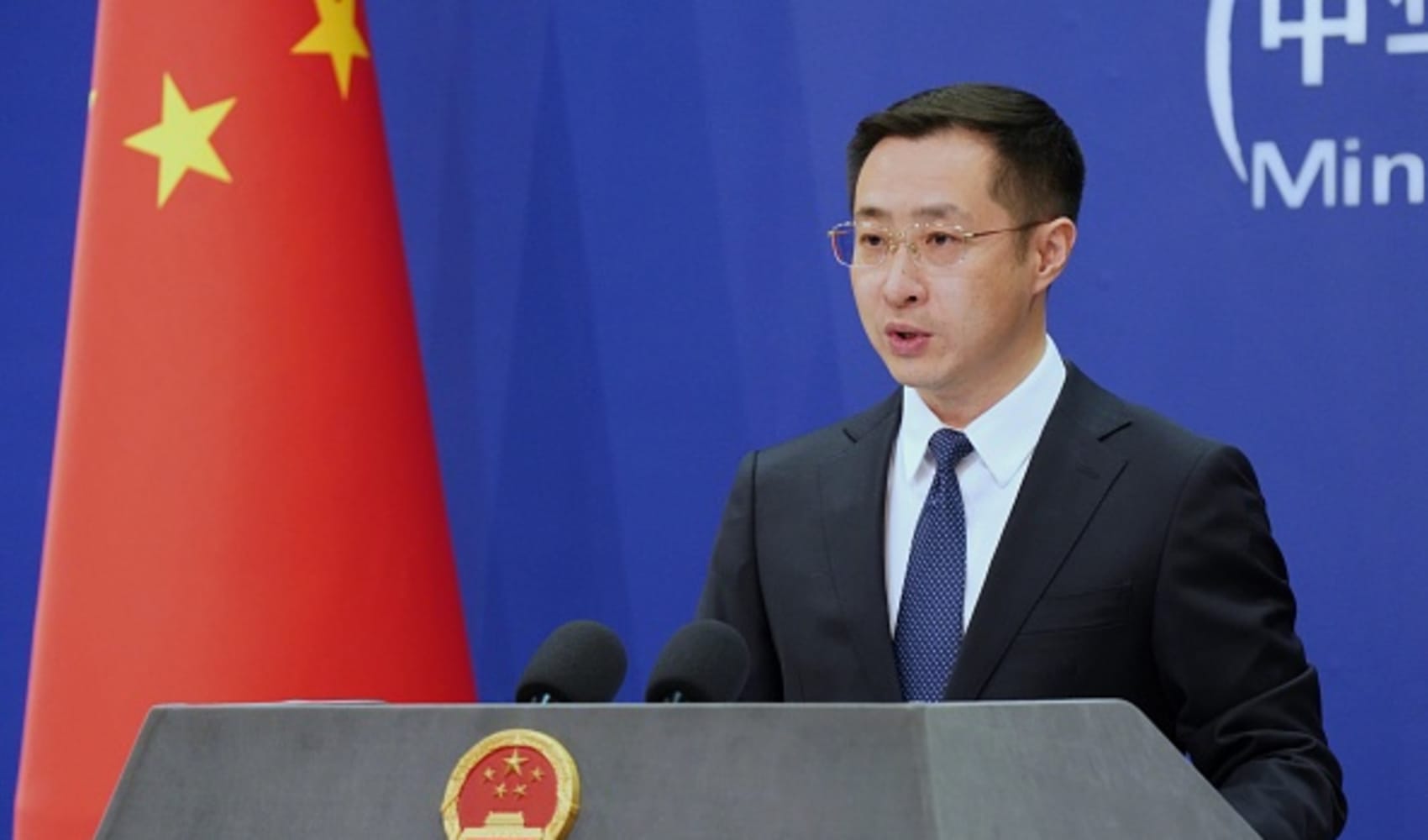US-China Trade Talks: Can Icebreakers Defrost the Freeze?
Icebreaker Trade Talks: Can the U.S. and China Defrost Relations?
Introduction: The Stakes are High
Get ready for a high-stakes showdown! U.S. and Chinese officials are gearing up for what's being called "icebreaker trade talks" this weekend. But don't let the name fool you – the outcome of these discussions could fundamentally reshape the economic relationship between the world’s two largest economies. Think of it like two heavyweight boxers entering the ring after a period of intense sparring. Will they find common ground, or will the fight continue?
Although analysts are tempering expectations, cautioning against expecting a sweeping deal from a single meeting, there's a glimmer of hope. Many are optimistic that a partial rollback of the existing tariffs – which have become a significant economic burden for both nations – might be on the table. So, what exactly can we expect from these crucial talks?
Why "Icebreaker" Talks? What Does It Really Mean?
The term "icebreaker" is pretty telling, isn’t it? It suggests a thawing of relations, a first step towards communication after a period of frosty silence. It implies that both sides are acknowledging the need to restart the dialogue, even if the path ahead is still uncertain. Imagine a frozen lake – these talks are meant to start chipping away at the ice to see what lies beneath.
Significance of Choosing Switzerland as the Venue
Switzerland, with its history of neutrality and diplomatic engagement, provides a fitting backdrop for these sensitive discussions. It's a neutral ground where both sides can feel comfortable engaging in open and honest conversation, free from the pressures of domestic politics or perceived biases.
Who's Heading to the Negotiating Table?
On the U.S. side, we have Treasury Secretary Scott Bessent and Trade Representative Jamieson Greer. Representing China is Vice Premier He Lifeng, a key economic advisor to President Xi Jinping. These are high-level officials, indicating the seriousness with which both nations are approaching these talks.
The Weight of Experience: Why These Individuals Matter
These aren't just random bureaucrats. Bessent and Greer bring deep expertise in trade and finance to the table, while He Lifeng's close ties to the Chinese leadership signify that he has the authority to make significant decisions. Their presence underscores the commitment of both countries to finding a resolution.
What's Driving the Urgency for De-escalation?
Let’s face it: the trade war has been painful for both sides. The tariffs imposed on billions of dollars worth of goods have disrupted supply chains, increased costs for consumers, and dampened economic growth. The economic toll has become increasingly difficult to ignore, creating a strong incentive for de-escalation.
The Impact on the U.S. Economy: Beyond the Headlines
While headlines often focus on the impact on large corporations, the trade war has also affected smaller businesses and consumers. Increased import costs have led to higher prices for everyday goods, impacting household budgets and potentially slowing down consumer spending, a key driver of the U.S. economy.
The Chinese Perspective: Economic Slowdown and Shifting Priorities
China, too, has felt the pinch. The trade war has contributed to a slowdown in economic growth, putting pressure on the government to find new sources of demand and maintain stability. De-escalation would provide a much-needed boost to the Chinese economy and help stabilize its growth trajectory.
What's on the Table? Key Discussion Points
While the specifics remain tightly guarded, here's what we can expect to be discussed:
- Tariff Rollbacks: This is the big one. Both sides may be looking to reduce or eliminate some of the tariffs imposed during the trade war.
- Intellectual Property Protection: The U.S. has long accused China of intellectual property theft, and this issue will likely be a key point of contention.
- Market Access: The U.S. may push for greater access to the Chinese market for its goods and services.
- Agricultural Purchases: China may commit to purchasing more U.S. agricultural products.
- Investment Restrictions: Both sides may discuss easing restrictions on foreign investment.
The Obstacles: What Could Derail the Talks?
Even with the desire to de-escalate, significant obstacles remain.
Deep-Seated Distrust and Long-Standing Grievances
Years of trade disputes and accusations have created a deep-seated distrust between the two countries. Overcoming this will require significant goodwill and a willingness to compromise.
Domestic Political Pressures: Navigating Murky Waters
Both the U.S. and China face domestic political pressures that could limit their flexibility in negotiations. Leaders must balance the need for a deal with the need to appear strong and protect their national interests. Is the political climate even right for compromise?
The Taiwan Question: The Elephant in the Room
The issue of Taiwan remains a major point of contention between the U.S. and China. While it's unlikely to be directly addressed in these trade talks, it casts a long shadow over the relationship and could complicate efforts to find common ground. It's an ever-present risk factor.
Best-Case Scenario: What Would Success Look Like?
In an ideal scenario, the talks would result in a comprehensive agreement that addresses the major issues and lays the foundation for a more stable and predictable economic relationship. This would likely involve a significant rollback of tariffs, stronger protections for intellectual property, and increased market access for both sides.
The Ripple Effect: How a Deal Could Boost the Global Economy
A successful outcome would not only benefit the U.S. and China but also the global economy as a whole. Reduced trade barriers and increased certainty would boost trade flows, stimulate investment, and support economic growth worldwide.
Worst-Case Scenario: Sticking Points and Stalled Progress
On the other hand, the talks could break down without any significant progress. This could lead to a further escalation of trade tensions and potentially trigger a new round of tariffs. The resulting uncertainty would weigh heavily on the global economy.
The Potential for Further Escalation: A Slippery Slope
If the talks fail, both sides could resort to further retaliatory measures, such as imposing new tariffs or restricting investment. This could create a vicious cycle of escalation that further damages the economic relationship.
Beyond Tariffs: The Broader Geopolitical Context
It's crucial to remember that the trade war is just one aspect of a broader geopolitical rivalry between the U.S. and China. The two countries are competing for influence in areas such as technology, military power, and international diplomacy. This competition will continue to shape the relationship even if a trade deal is reached. It's more than just about money, isn't it?
The Tech War: A Battle for Supremacy
The U.S. and China are locked in a fierce competition for technological leadership, particularly in areas such as artificial intelligence, 5G, and semiconductors. This "tech war" is likely to intensify in the coming years, regardless of the outcome of the trade talks. Securing technological advantages is the new global battlefield.
The Role of Technology: Can Innovation Bridge the Gap?
Technology could be a double-edged sword. On one hand, technological competition could exacerbate tensions. On the other hand, collaboration on certain technologies could create opportunities for cooperation and mutual benefit. Innovation can either build bridges or walls, depending on how it's used.
Areas for Potential Collaboration: Green Energy and Sustainable Development
Despite the competition, there are areas where the U.S. and China could potentially collaborate, such as green energy and sustainable development. Addressing climate change and promoting sustainable development require global cooperation, and the U.S. and China have a shared interest in finding solutions.
Expert Opinions: What the Analysts Are Saying
Most analysts are cautiously optimistic about the potential for progress in these talks, but they also acknowledge the significant challenges that remain. They emphasize the importance of both sides showing flexibility and a willingness to compromise. Many believe that a partial deal is the most likely outcome.
Monitoring Key Indicators: Tracking the Success of the Talks
To gauge the success of the talks, it's important to monitor key indicators such as tariff levels, trade flows, and investment activity. Any significant changes in these indicators could provide insights into the state of the U.S.-China economic relationship. Always watch the numbers.
Conclusion: A Long Road Ahead
The icebreaker trade talks represent a critical opportunity for the U.S. and China to de-escalate tensions and reset their economic relationship. While a comprehensive deal is unlikely in the short term, even a partial rollback of tariffs could provide a much-needed boost to the global economy. However, significant challenges remain, and the long-term future of the relationship will depend on both sides demonstrating a willingness to compromise and address the underlying issues. The future remains uncertain, but the starting gun has been fired.
Frequently Asked Questions (FAQs)
Here are some common questions about the U.S.-China trade relationship and the ongoing talks:
- 1. What are the main reasons for the U.S.-China trade war?
- The trade war stemmed from U.S. concerns over China's trade practices, including intellectual property theft, forced technology transfer, and unfair trade barriers. The U.S. aimed to level the playing field and reduce its trade deficit with China.
- 2. How have tariffs impacted consumers in the U.S.?
- Tariffs have increased the cost of imported goods, leading to higher prices for consumers on a range of products, from electronics to clothing to household goods. The impact varies depending on the product and the availability of alternative suppliers.
- 3. What specific steps are each side likely to take to de-escalate the trade tensions?
- Both sides could agree to rollback existing tariffs in phases, increase market access for goods and services, and enhance enforcement of intellectual property rights. A commitment to future negotiations on outstanding issues would also be a positive step.
- 4. If the talks fail, what are the possible next steps that either side could take?
- Failure could lead to the imposition of new tariffs on previously untargeted goods, further restrictions on investment, or other retaliatory measures. This could trigger a broader economic slowdown and increase uncertainty in global markets.
- 5. Beyond trade, what other areas of competition or cooperation exist between the U.S. and China?
- Beyond trade, the U.S. and China compete in technology, military power, and international diplomacy. However, they also have potential areas for cooperation, such as addressing climate change, promoting global health, and preventing nuclear proliferation.


